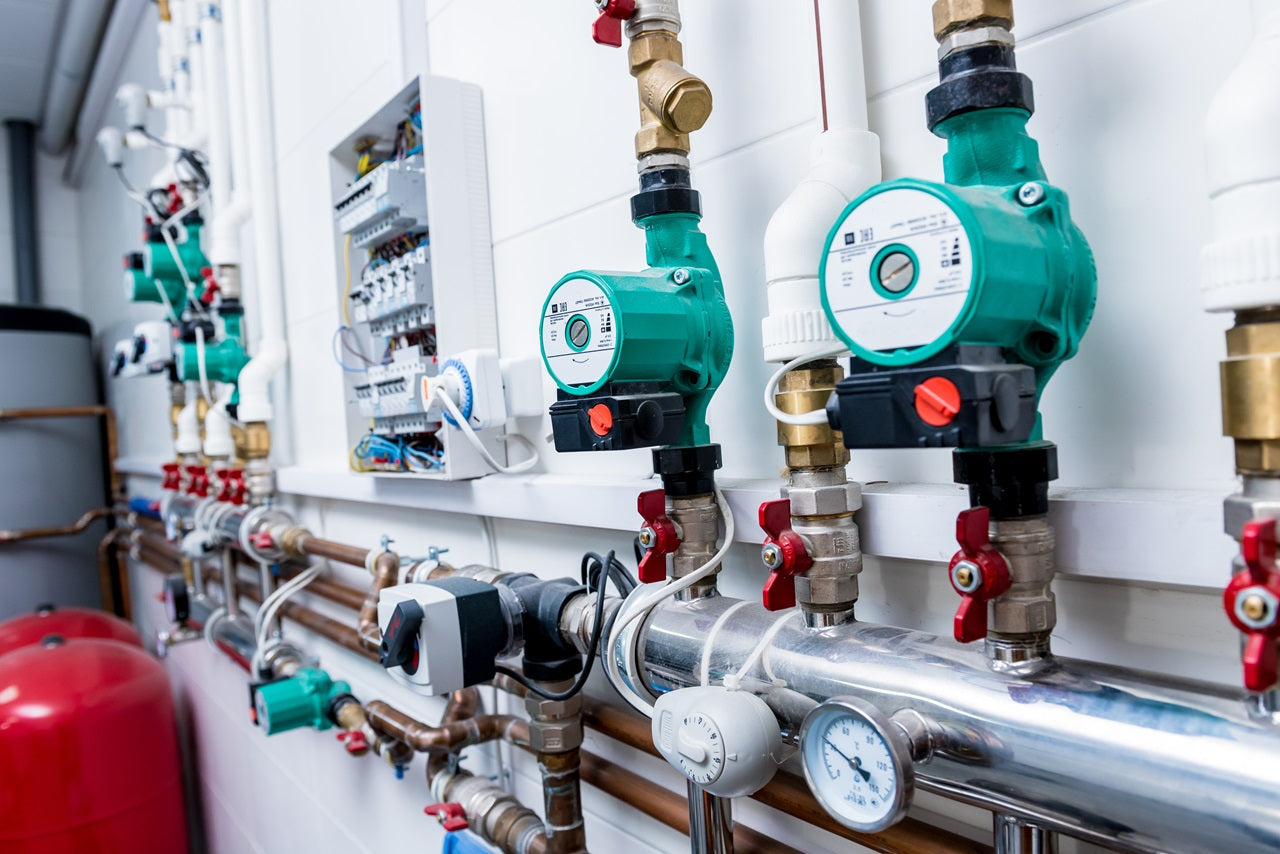A water circulation pump ensures consistent hot water flow in a home’s heating system. It helps reduce water waste, increases comfort, and improves energy efficiency. Choosing the right model depends on several factors, including system type, efficiency, and ease of maintenance. This guide will explain what to consider when selecting a hot water circulation pump, how it works, and how to maintain it for long-term performance.
How a Water Circulation Pump Works
A water circulation pump moves hot water through pipes, ensuring that hot water is available when needed. This is useful for both heating systems and domestic hot water supply. Without a pump, water sits in pipes and cools down, requiring time to reheat when needed. A circulation pump keeps water moving, reducing wait times and making heating systems more effective.
Discover our most popular product categories – find what you need today!
- Air to Water Heat Exchangers
- Water to Air Heat Exchangers
- Plate Heat Exchangers
- Oil Coolers & Intercoolers
- Tankless Water Heaters
Many pumps operate automatically, turning on when the temperature drops below a certain level. Some models work continuously, while others use sensors or timers to activate only when necessary. This prevents unnecessary energy use and extends the lifespan of the system.
Key features of a circulating pump include:
- Motor efficiency – High-efficiency motors consume less electricity while maintaining water movement.
- Speed settings – Some pumps allow adjustable speeds for better performance control.
- Installation type – Options include inline models installed on return pipes and dedicated recirculation systems.
- Control options – Many pumps use thermostats, timers, or smart home systems for automated operation.
Selecting a hot water circulation pump that matches your home’s heating system ensures better comfort and lower utility costs.
Types of Water Circulation Pumps
Different types of hot water circulation pump models are designed for specific applications. Some pumps work continuously, while others operate only when needed. Understanding these options helps in making an informed choice.
- Standard circulation pumps – Used in central heating systems, they continuously move water through pipes to maintain a steady temperature.
- On-demand circulation pumps – These activate only when hot water is needed, reducing energy use. They are ideal for homes looking to cut down on electricity consumption.
- Smart pumps – These adjust speed based on demand and usage patterns. They offer better efficiency and help in reducing energy costs over time.
Some systems require a circulating pump that integrates with an existing boiler or water heater, while others are standalone units. Choosing the right type ensures that water flows efficiently without excess energy waste.
When selecting a pump, it is important to check its compatibility with your plumbing system. The model should match the pipe size, water flow requirements, and heating system capacity. This prevents overheating, excessive energy consumption, or insufficient water flow.
What to Consider When Choosing a Pump
Several factors determine the efficiency and effectiveness of a circulating pump. Choosing the right model requires attention to performance, durability, and energy efficiency.
- Flow rate – Measured in gallons per minute (GPM), should match your heating system’s requirements. A low GPM may result in slow heating, while an excessively high GPM can cause unnecessary energy consumption.
- Head pressure – This determines the pump’s ability to move water through pipes. Higher head pressure is required for larger homes or systems with long piping.
- Energy consumption – Modern pumps with variable-speed motors adjust power usage based on demand, reducing electricity costs.
- Noise levels – Low-noise pumps are essential for indoor installations, especially in small homes or apartments.
- Build quality – Pumps from corrosion-resistant materials like brass or stainless steel last longer than plastic alternatives.
Before purchasing, check the manufacturer’s specifications to ensure the pump meets your home’s heating requirements. Choosing an efficient and durable model can help reduce long-term maintenance costs.
Installation and Maintenance
A water circulation pump must be installed correctly to function efficiently. Proper installation prevents leaks, ensures smooth operation, and prolongs the pump’s lifespan.
Installation Steps:
- Select the correct location – Most pumps are installed near the boiler or water heater.
- Ensure proper alignment – Pipes should connect securely to avoid leaks.
- Secure the wiring – Electrical connections must follow safety standards to prevent malfunctions.
- Test for functionality – Run the system and check for consistent water flow and heating.
Routine maintenance is necessary to keep a circulating pump in good condition.
- Check for leaks or unusual noises that may indicate a problem.
- Clean filters if the pump has them to prevent blockages.
- Ensure the motor is running smoothly and not overheating.
Regular inspections help identify issues early and prevent costly repairs. A well-maintained pump operates efficiently and lasts longer, saving money on replacements.
Benefits of a Hot Water Circulation Pump
A hot water circulation pump improves comfort, reduces water waste, and enhances heating efficiency. Many homeowners install these pumps to ensure immediate access to hot water while keeping energy use in check.
Key benefits include:
- Instant hot water – No waiting for warm water at taps or showers.
- Reduced water waste – Eliminates running cold water while waiting for it to heat up.
- Energy efficiency – Some models operate on minimal power, lowering electricity costs.
- Prevention of pipe freezing – In colder climates, constant water movement prevents pipes from freezing during winter.
Homes with large plumbing systems benefit greatly from a circulating pump because it ensures hot water is available in all areas without delay. Investing in the right pump can improve daily convenience and help manage water and electricity bills more effectively.

